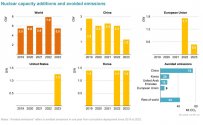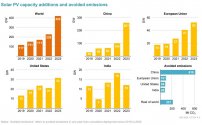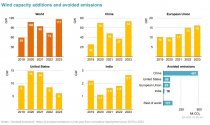There's a common saying among renewables experts, "it's not the first 90% that I worry about, it's the last 10%". Which is to say that getting a grid to mostly renewables is easy, getting it to be all renewables will be much harder. Nuclear still has a place in China for baseload and that last 10-20%.Comment: Despite China being very pro-nuclear in policy, unlike much of Europe, it seems like the future of the energy transition is going to be WWS. Nuclear will have a minor role. I suspect the high cost and long lead times are to blame. It's just not as competitive for rapid scale-up whereas renewable energy costs are falling rapidly.
Anyway, China's nuclear industry is still in infancy. Do remember that just a decade ago China has building like 7 different designs of nuclear power, all foreign designs too. That's not a good way of doing mass production. It's only quite recently that China has a completely domestic reactor design and has started mass production. Even then, the first units took a lot longer then the expected 5 years of construction time, which is to be expected for a new design.
Due to this only a handful of Hualong-1, CAP-1000 have finished construction, although there's still a large number of them under construction. Eventually the construction time and speed will ramp up, which can be seen in the increase in the number of new nuclear plants approvals that China has been over the last 4 years. I think we will see 10+ gigawatts coming online every year once we reach the late 2020s.
And there's the other factors that will increase nuclear plant construction like the upgraded Hualong-2, which is expected to lower costs and construction time. Or once China has a more secure fuel supply via breeder reactors and has increased it's ability to produce the more exotic fuels like HALEU. Or better regulations like allowing nuclear reactors to be built inland like every other major nuclear country.
Last edited:




